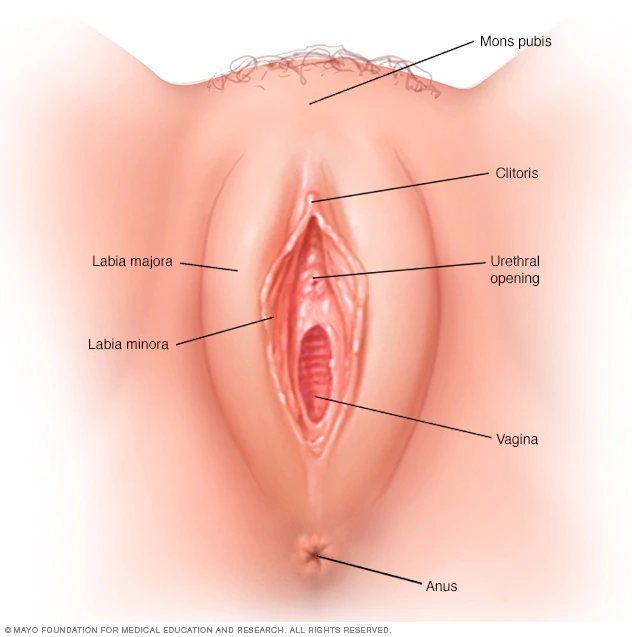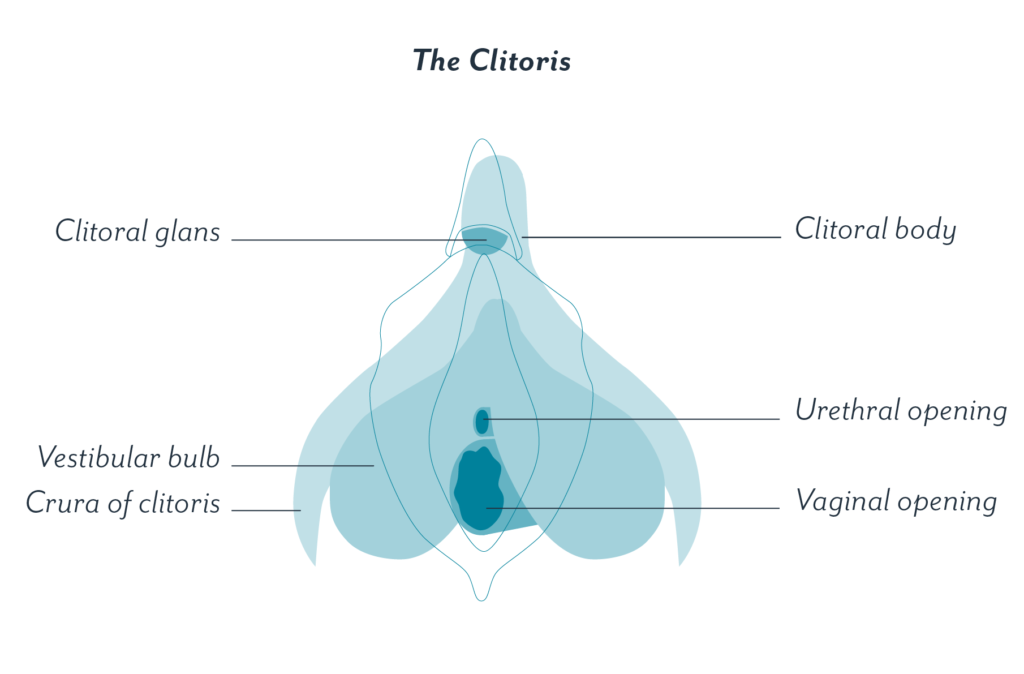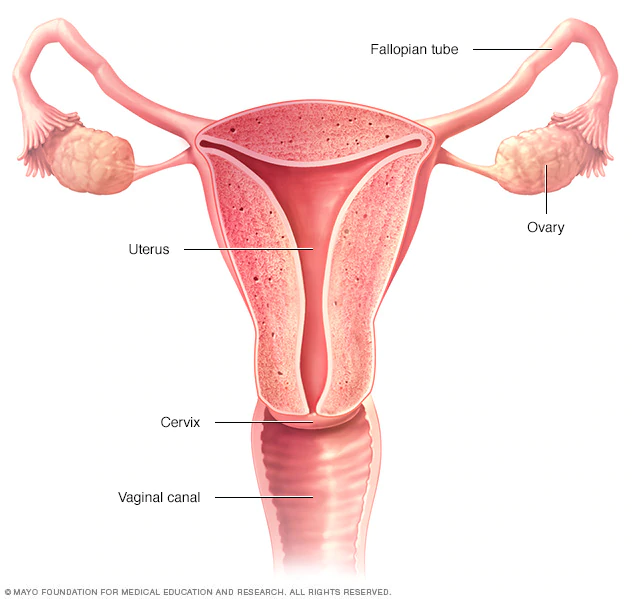Female Reproductive System
It’s important to understand how your body works, especially the organs that play a role in leading to pregnancy. Males and females have different reproductive systems. For some of you, however, you may have body parts that don’t fit the typical definitions of males or females. This is described as intersex. Learn about the different sexes and genders on the Sex and Gender page.
On this page, you’ll be learning about the female reproductive system. If you want to learn about pregnancy and how your body changes during puberty, visit our Pregnancy and Puberty pages.
In addition, check out this video going over the female reproductive system.
External Structures

The external area of the female reproductive system is called the vulva, and there are different parts of the vulva, as shown in the picture on the right and described below.
- Mons pubis. The mons pubis is a mound of fat tissue that covers the pubic bone and functions as a cushion during sex. It’s usually covered by pubic hair.
- Clitoris. The clitoris is a small protrusion where both labia minora meet and is covered by a fold of skin, called the prepuce. The prepuce is similar to foreskin on the penis. The clitoris is actually bigger than the protrusion shown in the picture of the vulva. It extends inside the body and is shaped like a wishbone, as shown in the blue picture on the right. The function of the clitoris is sexual pleasure.
- Labia majora. Meaning “large lips”. The labia majora protect the other reproductive organs on the outside. During puberty, you’ll notice that pubic hair will grow on the labia majora.
- Urethral opening. This opening is connected to the urethra and is where urine exits the body.
- Labia minora. Meaning “small lips”. These are located inside the labia majora and cover the urethral opening and vagina. The labia majora are delicate and can vary in shapes and sizes.
Internal Structures

- Vagina. The vagina is a tube that connects the cervix to the outside of the body. It’s also called the birth canal. A common myth is that you pee out of your vagina. That is not true. The urethral opening is a separate opening that urine comes out of.
- Cervix. The cervix is a narrow area between the uterus and the vagina. It has three functions:
- Allows menstrual flow from the uterus to the vagina
- Allows sperm to travel to the uterus
- Dilates during labor for delivery
- Uterus. Also known as the womb. The uterus is a pear-shaped organ that can expand to hold a fetus during pregnancy.
- Fallopian tubes. The fallopian tubes are narrow tubes that connect the uterus to the ovaries and serve as a path for ova (eggs). Fertilization of an egg by a sperm cell typically occurs in the fallopian tubes.
- Ovaries. The ovaries are connected to the fallopian tubes and have three main functions:

- Produce and store eggs
- Release eggs for fertilization (known as ovulation)
- Secrete hormones
Content reviewed by Shandhini Raidoo, MD, MPH, FACOG
Last Updated: September 25, 2020 by Phyllis Raquinio
Sources
- Vulva and Female Reproductive Anatomy Photos: Vagina: What’s normal, what’s not. (2020, February 11). Retrieved July 25, 2020, from https://www.mayoclinic.org/healthy-lifestyle/womens-health/in-depth/vagina/art-20046562
- Clitoris Photo: Telfer, N., & McWeeney, C. (2019, July 1). What is the clitoris? And where is it? Retrieved July 25, 2020, from https://helloclue.com/articles/cycle-a-z/what-is-the-clitoris